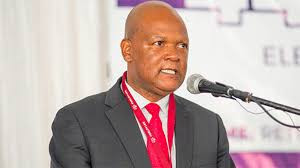One day I was travelling on public transport where the driver’s assistant was well known at every point where the bus stopped. A curious passenger enquired about the reason for such popularity to which the assistant pompously responded that “he was as famous as money”.
Money is the most popular form of capital, and everyone claims to know it and the language it speaks. It however appears that we are knowledgeable about it before it arrives and after it departs.
Capital and its sources.
Capital is the funding for business set up and operations that is accessed primarily from various sources including owners’ contributions and lenders’ credit extensions. It is used to acquire fixed assets, current assets in the form of inventory as well as to pay for services necessary for the creation of a saleable product or service. Working capital is the funding that is available for the day-to-day business operations after catering for what is immediately payable. Shortages occur when there is little or no more dough to make fresh bread to sell after paying for previous activities even though ovens may be available and ready.
Entities often go out to look for working capital and the world abounds with statements such as “capital injection”. However, the “injection” frequently does not appear to bring the anticipated healing but more of side effects such as unbearable capital and interest instalments and the spectre of liquidation after failing to repay the working capital loan.
Walking capital
Keep Reading
- Strive Masiyiwa eyes US$500m for expansion
- Immunisation information dearth in communities
- Strive Masiyiwa eyes US$500m for expansion
- Zim banks under siege
At one time I was engaged in exercises to determine where the capital had gone to as financial reports showed bulging liabilities without matching assets. The findings indicated that the capital had somehow moved thus I then came up with the term “walking capital”. It is euphemism for working capital that would have shifted or disappeared from its expected place in a company.
Capital works when it is active and stays in its original state or location. It “walks” when it either remains in the entity but moves aside (changes state) or totally makes an exit. Working capital is borrowed for trading purposes thus it is expected to bring returns quickly and repeatedly. It often comes with short repayment cycles and high interest rates. Entities, in their own wisdom, may decide to use part of working capital proceeds to fund capital assets and in this manner the capital changes state there by “walking sideways”. The wheels that deliver returns from capital assets turn slower than those which usher finance charges thereby creating a mismatch.
The steps to the exit
One way that capital walks out of a company is through losses which arise when earnings are inadequate to cover costs being incurred at the same time or through pilferage. For a season, money from borrowings may be used to fund recurring and often less or non-fruitful expenditures. Eventually, the working capital dries up and reality often gets acknowledged late and after spirited efforts to wrestle with the truth.
Another route that working capital exits tends to kill softly and gradually and is through debtors who either delay payment or fail to pay at all. The walk-out occurs at snail’s pace in that for a moment the records show the debtor as a current asset which then gradually ages with the passage of time.
Emerging entities have been sunk or nearly sunk by the halo effect regarding “big players” who are so highly regarded that credit terms, both tenure and amounts, are stretched to accommodate their whims. The series of events start with the “big man” placing a big order beyond the seller’s working capital capacity and the latter proceeds to run to financiers to borrow. The excitement from getting an order and the holy grail of life changing profits often leads to losing sight of high borrowing costs. The seller goes on to supply and record the greatest ever income in their books while also revelling in being a supplier to the blue chips of the market.
For a moment everything looks good until the first anniversary of the payment where non-payment may be brushed aside as a “technical delay” rather than financial incapacitation.
The same scenario repeats itself unabated as those involved continue coming up with fanciful explanations to protect the high value customer. The seller continues to incur costs to engage the customer while skirting the surgical route of demanding payment for fear of upsetting the latter and losing future business.
An often-ignored red flag is one where the hunter (seller) becomes the hunted. Many big players ignore and at times dislike small “non-strategic” suppliers thus it is usually a “misfortune” to find the big player chasing the small fish for favours. One blue chip or ship sank and went down with no less than a dozen suppliers. It began when the big ship caught a financial cold and lost the ability to directly import supplies so it then moved to big local suppliers who could still import the same requirements. The big suppliers eventually either stopped supplying or ran out of materials at which time the “esteemed customer” moved to getting things on credit from many small customers. The conclusion of the story was that the ship went down with millions of dollars owed to more than 150 suppliers, the majority of whom were small suppliers from whom goods and services had been accessed shortly before the demise.
Preventing or stopping the walk
Taking time to create a plan and sticking to it is one such simple but not an easy way to avoid capital from walking away. Deviating from such is like defaulting on a medical treatment regime which may be done behind the back of the doctor but whose results will be evident to all.
If the capital has already walked off, then there are basic steps to be taken which include admitting the departure and preparing for the funeral. Denial creates further problems like a group of faithfuls who delayed the burial of their leader hoping for her resurrection. It all ended up in a hurried burial of a decomposing body which created discomfort, health risks, embarrassment, and ridicule and censure from responsible authorities.
Disposal of less strategic assets to pay off some of the working capital debts/needs is one sure way of managing the situation. It may be better to remain with a smaller well capitalised and operating entity than a seemingly big but hollow entity with underutilised equipment that will be quickly graduating into obsolescence.
A common joke states that one can save on rentals by marrying the landlord’s daughter and this can also apply to a distressed business which can get married to the creditor through debt-to-equity conversion. Shareholders can be cajoled into putting in fresh capital provided they somehow believe in the situation being salvageable. The other possible option is the invitation of new shareholders to cover the funding gap.
Debt to equity conversions and new capital injections, just like in marriage, will call for the existing shareholders and managers to accept and allow dilution of their influence. In some instances, possible tie-ups have been scuttled by existing players who either insist on being married and accepted “voetstoots” (same strategy, same bloated workforce, and same products). In other instances, the founding members refuse to accept the demise of their dream and its diminution in value thus either decline help or insist on some overstated value more related to their ego than underlying value and worth.
After all is said and done, capital comes with legs and can and will walk off if pushed or left unattended. Thankfully, sometimes measures taken in time can stop further movement and peradventure reverse the course of deviation as the old adage wisdom which says a stitch in time saves nine.
- Chipangura is a fellow member of Icaz with more than 20 years of post-graduate working and consulting experience in the manufacturing, mining and NGO sectors in Africa and the Mena regions. He is an accountant by training and storyteller by birth. — kchipangura@gmail.com.





